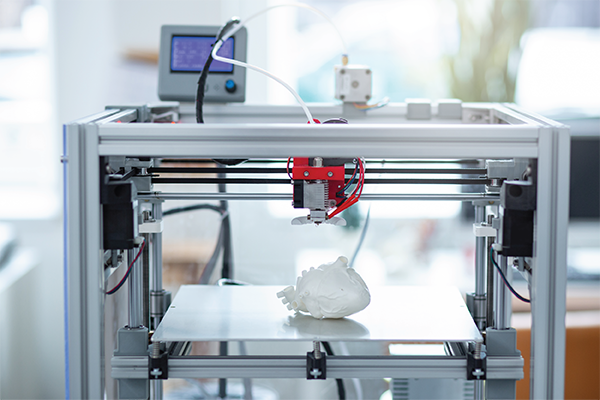Healthcare organizations are always looking for new ways to innovate and better serve the unique needs of each individual patient. Technological advancements in medicine have led to more personalized, accurate, and efficient approaches in healthcare, and one field that has emerged is medical 3D printing. With its versatility and transformative potential, 3D printing can be applied by healthcare providers across a wide range of medical specialties.
What Is 3D Printing?
Also called additive manufacturing, 3D printing creates three-dimensional objects layer-by-layer using a digital file. These 3D digital file models can be produced by computer-aided design (CAD) drawings, or medical imaging techniques such as X-rays, computed tomography (CT) scans, magnetic resonance imaging (MRI) scans, and ultrasounds.
There are several types of 3D printers on the market, and the ones used in medicine vary based on the complexity of projects and materials needed, as not all printers have the same capabilities. In some cases, an inexpensive model that can only print simple plastic parts may be sufficient for some healthcare providers. In other cases, however, a commercial-grade printer may be needed to produce an intricate object made from a patient’s living cells.
How Is 3D Printing Used in Healthcare?
3D printing is used by health systems and medical researchers globally. The tool can be applied in specialties such as surgery, orthopedics, pediatrics, and more.
Prosthetics
When getting fitted for a prosthesis, patients traditionally go through the inconvenient process of multiple castings and follow-up appointments for the fit – a process that typically takes weeks or months and results in an expensive custom prothesis. The 3D printing process saves time for both patients and providers, as prosthetics can be made from a single 3D scan of a patient’s residual limb and created in a fraction of the production time1. Prosthetics made from 3D printing are also much more affordable, which is particularly applicable for children who outgrow them quickly and need new custom parts.
Surgical Planning
Surgeons often use anatomical models to practice before performing complicated operations, but any average model can’t show the precise details of a patient’s particular anatomy. 3D printing allows for in-house printing of patient-specific organ replicas, reproducing the exact conditions of any surgery. 3D-printed anatomical models enable surgeons to plan an operation efficiently, establish better treatment solutions, and improve research and training2.
Bioprinting
A wide variety of materials can be used when 3D printing, including plastic, metal, and even living cells. This concept is called bioprinting, which uses stem cells or cells cultivated from tissue samples to create bones, skin, cartilage, and more1. In 2014, California-based company Organovo was the first to successfully 3D print human livers and kidneys, but researchers are still working on printing organs that are fully functioning3.
How CNECT Can Help You
How could your organization utilize 3D printing to improve the way you treat patients? CNECT has multiple 3D printing specialists on contract, giving our members access to discounted prices on 3D printing services that revolutionize their treatments. If you’re interested in adding 3D printing services to your organization, contact the CNECT team today for more information.
Sources
1 https://www.rapidmade.com/3d-printing-in-the-medical-industry
2 https://www.mobihealthnews.com/news/contributed-top-8-healthcare-uses-3d-printing
3 https://medical-technology.nridigital.com/medical_technology_jul22/3d_printed_organs_affordability
